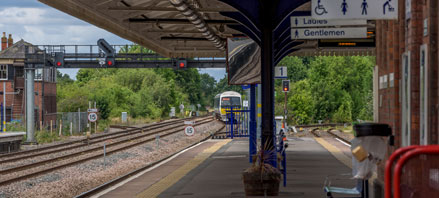Rail Infrastructure
From the overcrowded commuter trains heading into Coventry station at rush hour to the hordes of passengers filing through London’s St Pancras International terminal; it is obvious there is a huge pressure on the rail network in this country.
Passenger numbers have doubled since the mid-1990s and are set to double again over the next 25 years.
And this brings with it a whole host of challenges for the nation’s rail network and its infrastructure.
But a starting point to tackling the issues increased pressure on the network bring is to be able to monitor the country’s rail infrastructure better and to use the data acquired to make improvements.
Coventry University’s Centre for Business in Society (CBiS) has embarked on a project with companies including Network Rail, Virgin Trains, Serco, Alstom Transport, ID Computing and Oxford University to do just that.
The research involves trialling sensors fitted to passenger trains to record data about the vehicles’ journeys.
Analysis of this data will give important information about the condition of the infrastructure and flag up any potential problems that cause delays or safety issues.
It is hoped this greater understanding of the data will mean rail network problems can be predicted and prevented in advance.
Researchers and the rail companies working on the project believe this will help to make the train network safer and more reliable, leading to benefits to business and industry.
And it might just make life a little bit easier for all those weary passengers at Coventry, St Pancras and stations up and down the country who dread another delay on their daily journey.
Back to Sustainability and Resilience





